Calculating gluten-free conversions
How to covert (almost) any recipe to be gluten-free.
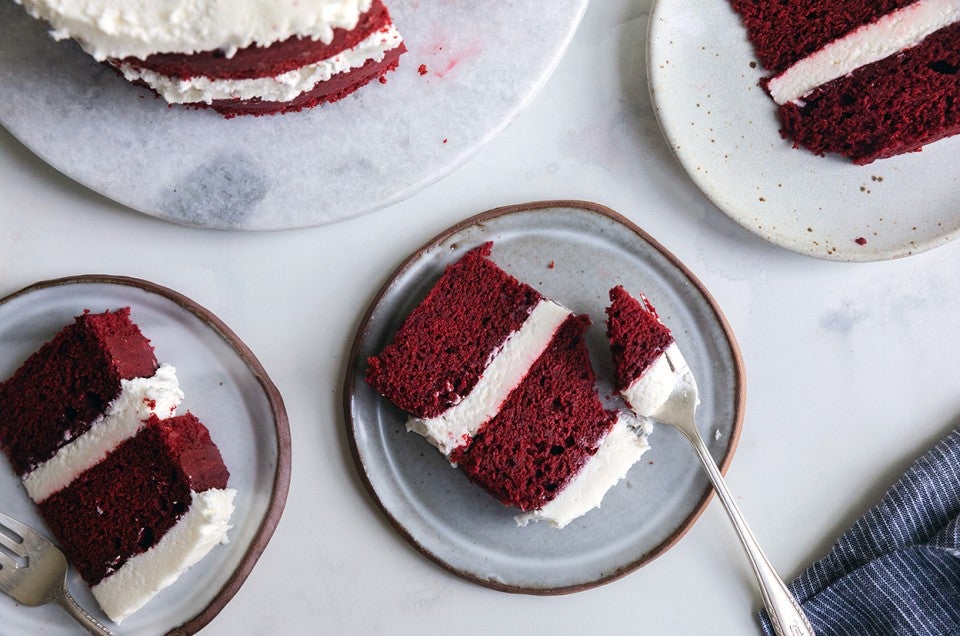

Editor's note: This post was updated in May 2024 to more accurately reflect our gluten-free conversion guidelines and product offerings.
When it comes to converting baking recipes to be gluten-free, things can quickly get complicated.
You might be wondering: Can't I just make my favorite recipes with gluten-free flour and cross my fingers for the best?
Well, you could, but it's not always so easy. Some conversions will work, but others will not, and while it’s not an exact science, understanding some basic tips can increase your chances of success. That’s what we’re here for.
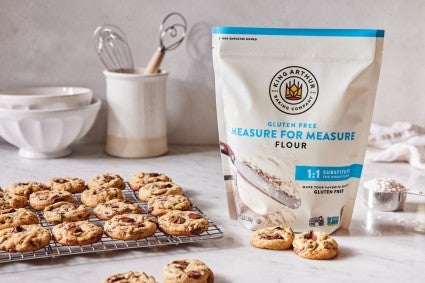
It's easy to make traditional recipes gluten-free with King Arthur Gluten-Free Measure for Measure Flour. It's a simple 1:1 substitute for all-purpose or whole grain flour that's designed to be easily swapped into most of your favorite non-yeasted recipes. It's ideal for almost all classic baking recipes — brownies, cookies, cake, biscuits, pancakes, muffins, etc. — and doesn't require any additional changes to the recipe.
Which means that with a bag of Measure for Measure Flour, you can make basically any non-yeasted recipe gluten-free. That’s it!
If, instead of simply swapping in Measure for Measure Flour, you're baking with gluten-free all-purpose flour — either our King Arthur Gluten-Free All-Purpose Flour or another type — you can still make a gluten-free version of a traditional recipe. It just takes a little extra adjustment. Here’s what to do.
Baker’s tip: For making cakes, muffins, cookies, and yeast doughs, a stand mixer is your new baking best friend. The power of the machine will stir your blends, aerate your batters, agitate your doughs, and hydrate your gums better than mere muscle alone. If you don't have one already, it's the best investment you'll make.
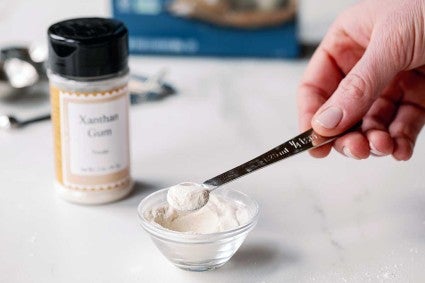
One important note: Xanthan gum is an important addition to gluten-free recipes, as it helps bind batters, lock in moisture, enhance texture, and control spread. Since Gluten-Free All-Purpose Flour doesn’t contain xanthan gum (like Measure for Measure does), you will have to add xanthan gum to your recipe when converting to be gluten-free. While there's no specific formula, we start with 1/4 teaspoon of xanthan gum for every 1 cup of flour in a recipe. Scale up for something that needs more elasticity (like Gluten-Free Cinnamon Rolls), or scale down for something that doesn’t need as much structure (like Gluten-Free Shortbread Cookies). This may take some experimenting.
Learn more about xanthan gum, as well as the difference between gluten-free flours.
Baker's tip: Have you ever spilled xanthan gum on your counter and tried to clean it up with a wet sponge? Unless you want a counter-top slip-and-slide (not to mention a few bucks down the drain), it's best to use a bench knife for cleanup, so you can maneuver the gum back into its container.
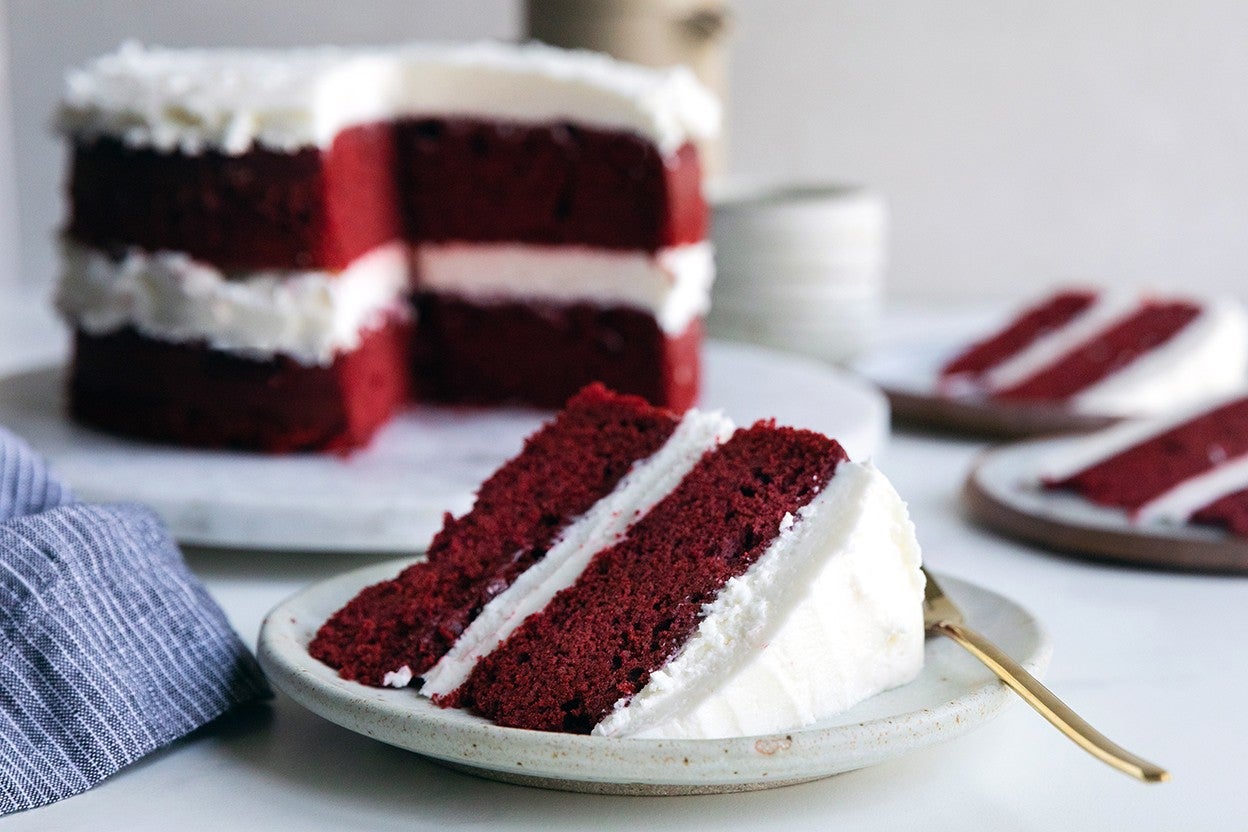
Cakes, quick breads, and muffins are some of the easiest, more straightforward recipes to recreate without gluten.
If baking with Gluten-Free All-Purpose Flour, these recipes need added xanthan gum (1/4 teaspoon per cup of flour is sufficient) and additional liquids. We usually suggest adding an extra egg to efficiently provide leavening, structure, and liquid.
Though it's important to aerate a cake batter, take care not to over-beat your gluten-free cake batter, as it can cause deflation in the oven. Baking cake to an internal temperature of 210°F ensures minimal sinking as the cake cools.
Giving cake and quick-bread batters a 10- to 15-minute rest before baking will allow the starches and xanthan gum to fully hydrate. Also, if you're adding fruit, chocolate chips, or nuts to your batters, complete this rest before stirring them in, to prevent them from sinking to the bottom during the bake. When the flour and xanthan gum are hydrated after resting, the batter will thicken and be able to suspend any added elements successfully.
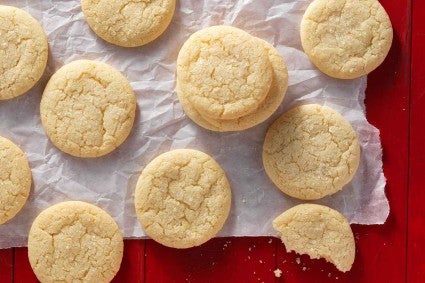
Because they lack the elastic strengthening network of gluten, cookies that are gluten-free are more prone to baking up crumbly, dry, and gritty without the proper recipe adjustments.
In the absence of gluten, and with a low hydration rate, gluten-free cookies rely on fat as a key ingredient to help create great texture. Fat can help smooth out the mouthfeel by reducing the perception of un-hydrated starch (what can cause that sandy feeling in your mouth). For the best gluten-free cookie texture when converting a recipe with Gluten-Free All-Purpose Flour, increase butter and/or shortening by up to 2 tablespoons. You can also replace a portion of the flour in the recipe with high-fat, naturally gluten-free nut flours such as almond or hazelnut.
Resting the dough for at least an hour (overnight is best) before baking is the best way to ensure that the gums and starches are hydrated to their full potential. Because of the lower level of liquid in cookie dough, the hydration rate is slower; thus a longer rest is necessary.
Adding liquids (egg, water, milk) will increase hydration and develop structure, but keep in mind that they may also promote a cake-like texture.
And don’t forget the xanthan gum! As noted above, start with 1/4 teaspoon of xanthan gum for every 1 cup of flour and adjust from there. Adding more xanthan gum will increase structure; adding less will reduce structure.
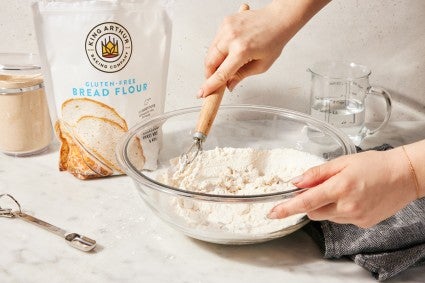
Typically, gluten-free yeast doughs are not easily convertible due to the many alterations needed for leavening and structure. Eggs, air, yeast, xanthan gum, and sometimes even chemical leavening agents are necessary to produce an ideal result along with sufficient hydration.
But with our latest gluten-free flour, that has all changed. Gluten-Free Bread Flour can be swapped 1:1 by weight or volume for the bread flour or all-purpose flour in your recipe. You’ll just need to make a few tweaks to the recipe, such as adding a few tablespoons extra liquid, letting the dough rest 20 minutes before kneading, and being prepared for faster proofing times. See full details in our blog post: How to substitute Gluten-Free Bread Flour for regular flour.
Want to learn more? Read through our Gluten-Free Baking Guide, and leave any questions in the comments, below! And remember, the easiest way to make traditional recipes gluten-free is with King Arthur Gluten-Free Measure for Measure Flour, a simple 1:1 substitute for all-purpose or whole-grain flour in non-yeasted recipes.


October 29, 2021 at 2:54am
In reply to Hi David. Volume remains the… by aherbert
I'm from the US living in the Philippines and one thing I've learned is that metric measurements are so much easier to work with. And keep in mind that there are other people world round reading your (and so many other's) blog/website. This is from a comment I'd seen for a recipe elsewhere - "Can you please add weight measurements (in grams) to it? This is so confusing. US cups, Australian cups, other cups... But a gram is a gram is a gram. And I've got a kitchen scale."
For things typically measured in small amounts, like salt, yeast, baking powder/soda, etc., I do use volumes. But in this case (which wasn't mentioned. My bad) what I plan to do is make some large batches of oat/coconut/rice flours w/ xanthan gum and a percentage value would make it so much easier. I do have to comment about the 5 gram variance in kitchen scales. Really? I've looked at kitchen scales from Amazon, Shopee, Lazada, and other online sites and have never seen such a huge variance. Regarding the link, I have in fact used this for items I didn't have packaging info for. My bread flour weighs 140gms per cup, per package info, significantly more than the KAF brand at 120gms. Other flours and items have shown similar differences.
Regardless, I do thank you very much for your response. I often see many people comment with questions that never get answered. I enjoyed this article a lot because it is beyond just a measurement conversion. It has much needed info about the xanthan, textures, hydration issues, etc.
October 29, 2021 at 9:43am
In reply to I'm from the US living in… by David (not verified)
Hi David, we're sorry we weren't able to help you out with the percentage, but perhaps this is something you can derive for yourself as you develop your large batch recipes. The first time you figure out the xanthan amount you may have to do it by volume, but if you weight the increased amount, you can use that weight amount and also factor the percentage as compared to the flour amount for future large batches.
July 16, 2021 at 8:22am
It’s just perfect. Informative and incredibly inspiring. I love your work guys….. Keep going, keep on to how you have been doing so far…. Stay blessed.
May 27, 2021 at 9:59pm
HI, I'm new to gluten free anything! made blueberry muffins with GF Robinhood flour blend, it already has xanthan gum added ( Canadian) my muffins were made with buttermilk,2 eggs, etc. I didn't use the stand mixer( haven't tried it yet. the muffins are delicious but crumbly. would it help to use an extra small amt. of xanthan gum in my flour?
May 28, 2021 at 2:32pm
In reply to HI, I'm new to gluten free… by Joyce Logue (not verified)
Hi there, Joyce! You can experiment with adding a touch more xanthan gum but we'd recommend adding no more than 1/8 teaspoon, too much xanthan gum can make for a gummy texture. Other reasons why the muffins might have been a little crumbly include over-mixing and too much flour in the batter — to ensure you have the proper amount we recommend either using a kitchen scale to weigh your ingredients or using the fluff and sprinkle technique for measuring flour in volume. We hope this helps for future baking adventures!
February 9, 2021 at 12:01pm
How many percent xantan in weight would you use for different things?
(Im really not a fan of volume measurements, especially when it comes to small amounts of solids.)
All the best - J
February 23, 2021 at 9:34am
In reply to How many percent xantan in… by Josef Tiselius (not verified)
Hi Josef, When adding xanthan gum to a recipe, use about 1/4 teaspoon per cup of flour. A teaspoon of xanthan gum weighs 2.5 grams. 1/4 teaspoon equals .625 grams. You'll need a microgram scale to accurately measure. You'll need to measure a cup of the flour you are using and then measure your xanthan gum accordingly.
December 25, 2020 at 10:34pm
I bake for a friend who's sensitive to a specific wheat protein but has no problem with oats or rye, and I'd like to make broonie for her. The KA recipe for one loaf includes 1.5 c. rolled oats, 1 c. white whole wheat flour, and 1 c. all-purpose flour. Can I substitute medium rye for the whole wheat and Measure-for-Measure for the all-purpose? If so, should I add xanthan or modify the recipe in any other way? How much of a difference would it make if I used white rye (which I don't have on hand) rather than medium rye? If this project is successful, I will definitely try to substitue rye for wheat in other quick bread recipes, so your advice will be very helpful.
January 5, 2021 at 2:08pm
In reply to I bake for a friend who's… by Carolyn (not verified)
Hi Carolyn! We haven't tried this recipe with medium rye flour in place of the whole wheat flour but you're welcome to give it a go! You may find that you need a couple of tablespoons of additional flour if the batter seems a touch dry. White rye has all the bran and germ absorbed so it won't lend much flavor, the medium rye would be a closer replacement for the white whole wheat flour. It will be just fine to use our Gluten Measure for Measure Flour in place of the all-purpose flour. Other than the potential need for additional liquid, you shouldn't need to make any other changes. Best of luck and happy experimenting!
October 20, 2020 at 11:34am
Would using Xanthan Gum in Pizza Dough prevent the dough from splitting when rolling out with your hands... I just started making home made Pizza Dough and have had a continuous problem with the dough splitting when rolling it out with my hands... any suggestions would be appreciated... thank you
Pagination